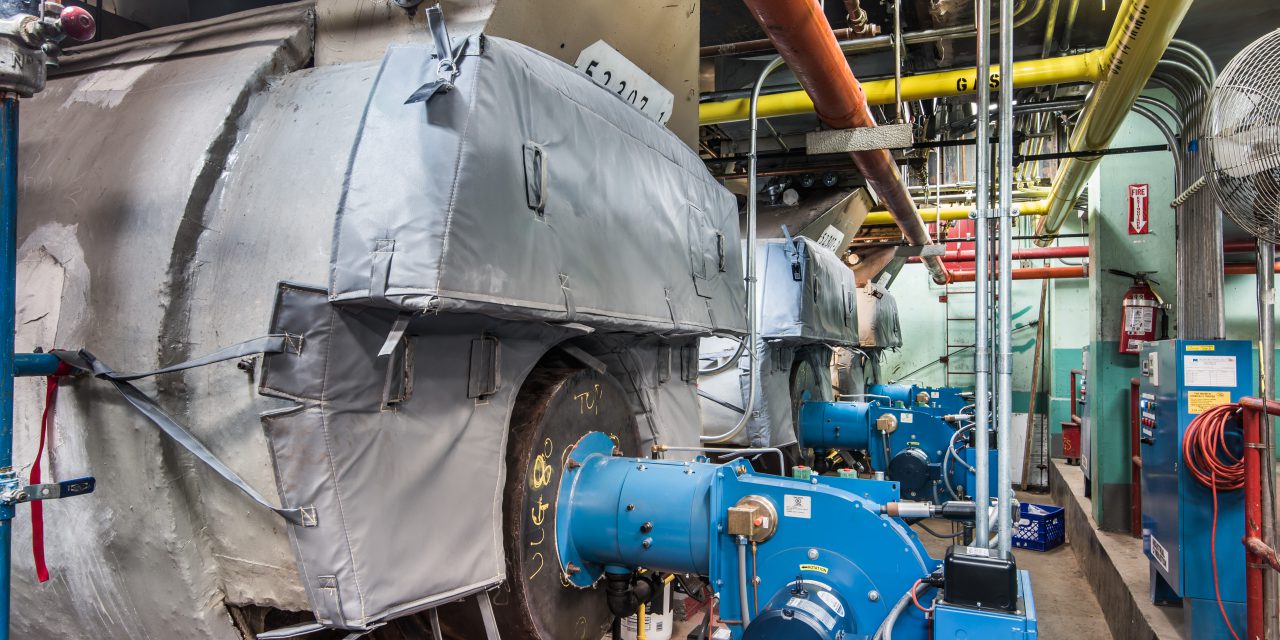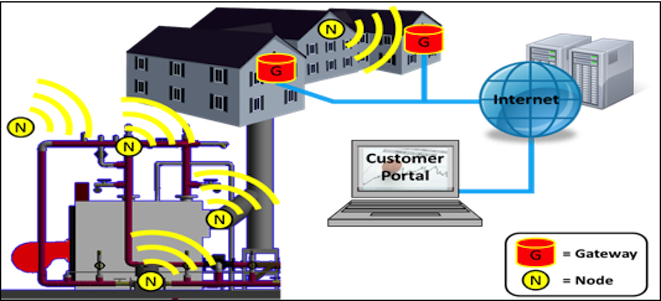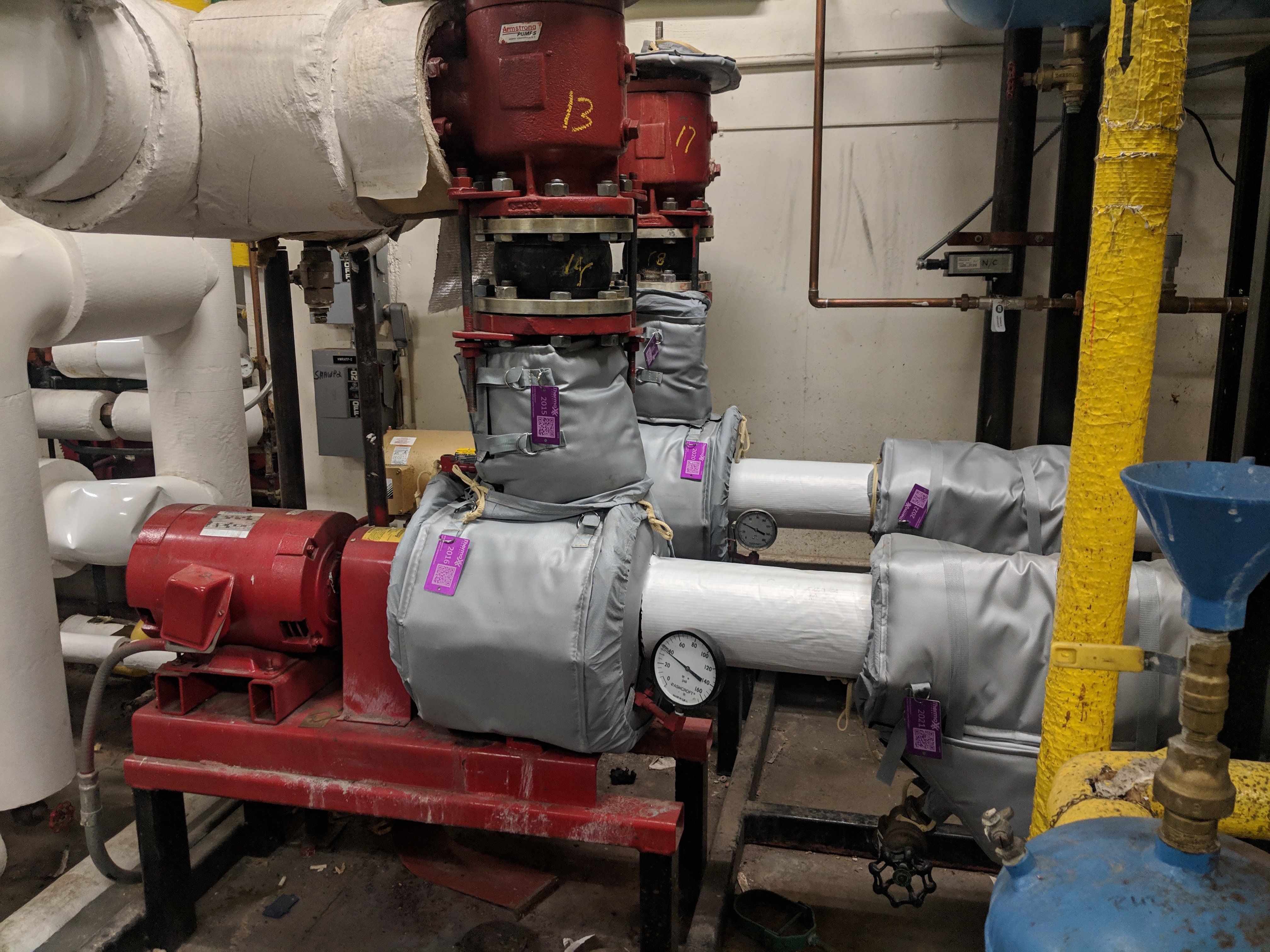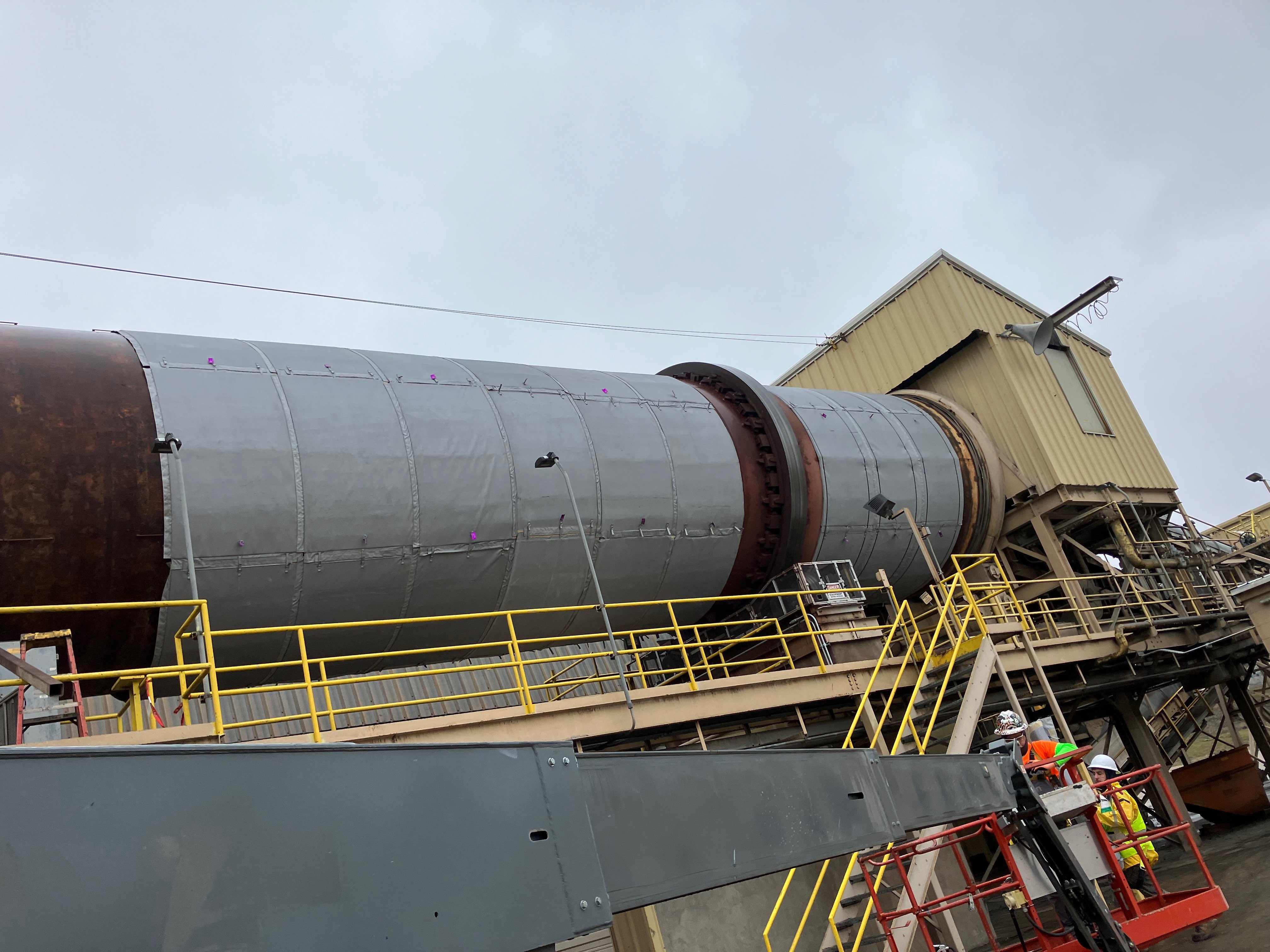Mechanical Insulation Payback Verification for the Budget Requester
This article was written by Brian Bannon, Co-Owner of Thermaxx Jackets.
Mechanical insulation has been used since piping has been carrying materials at a temperature higher or lower than ambient temperature the pipe is running through. As the industrial age advanced to the technology age, new construction and renovation specifications required steam, hot water, chilled water and cold water pipe to be insulated. Through the years, standards were tightened and material efficiencies improved. The specifications below show a detailed matrix specifying the actual required pipe insulation thickness based on pipe size and temperature. Many mechanical contractors simply install the insulation as specified, without knowing the end efficiency or impact to the ambient space the insulation will have. Unfortunately, pipe insulation will have a diminishing point of return. By way of example:
6” horizontal pipe operating at 300f (Needled Fiberglass with ambient of 80f)
| Insulation Thickness | Touch Temperature | Heat Loss (BTU/hr/ft^2) | Efficiency | Price per LF (installed) |
| None | 300 | 596.5 | 0.00 | $ 0.00 |
| 1” | 111.2 | 54.44 | 88.12 | $ 7.00 |
| 2” | 95.9 | 24.9 | 93.23 | $ 12.00 |
| 2.5” | 92.8 | 19.42 | 94.23 | $ 17.00 |
| 3” | 90,6 | 15.76 | 94.91 | $ 20.00 |
At some point the heat loss reduction does not justify the additional for layer of insulation cost. In the example above, 2” is the right amount of insulation. 1” was just not enough and 3” was a little overkill.
During construction and renovation, job sites are crawling with mechanical experts. Mechanical foreman, engineers, plumbers and supervisors are performing daily inspections. When the building Certificate of Occupancy is received, and the building owner assumes building operations, warranties expire and wear and tear begins. Pipe insulation begins to disappear.
Understandable, pipe insulation is not usually the first thing on the repair list. Building maintenance is focused on providing the services to their clients, the building occupants. Very rarely does a building occupant ask for pipe insulation in the mechanical rooms.
As the building matures, budgets are built and maintenance teams are required to work with historical budgets. These budgets usually roll over yearly and additional spending becomes more of a negotiation than a given. Any budget requester will tell you that backup and information is key to this negotiation. Having documentation on the long term savings, or increase in revenue, will make it easier to fund than the non-documented request.
Recent software provided by the National Insulation Association now gives more visibility into these savings. Mechanical insulation contractors and engineers can run a savings calculation using this software 3E Plus® Insulation Thickness Computer Program. This powerful tool requires a number of inputs: pipe temperature, pipe type, insulation thickness, etc. The output is similar to the chart above which gives the BTU savings and new touch temperature of the outside of the pipe insulation.
Budget requesters and energy appraisers can now project savings of future insulation projects. The projection spreadsheet can then be submitted for funding or budgeting. Measurement and verification has been missing from this process. Once the job is completed, there is no easy way to verify the success of the project or confirm the projected savings. This sometimes makes it difficult for additional funding request due to lack of verification.
 New technology “Smart Insulation” now puts the savings information digitally into the cloud. Smart Insulation, which contains temperature probes (high temperature thermocouples), sends this information wirelessly to the Internet. Smart Sensors are placed on top of the pipe insulation in various locations. These location numbers vary and are driven by the different pipe temperatures, pipe size and size of work area. Every half hour temperature readings under the insulation, along with ambient, are taken and sent to the web. Two AA batteries power the sensors. Battery life of the sensors is 3+ years. When the sensors or nodes wake up and take the temperature measurements, the information is sent to a gateway that is plugged into 110v house power. The Gateway then pushes the information online using a cell signal, wireless or ethernet connection.
New technology “Smart Insulation” now puts the savings information digitally into the cloud. Smart Insulation, which contains temperature probes (high temperature thermocouples), sends this information wirelessly to the Internet. Smart Sensors are placed on top of the pipe insulation in various locations. These location numbers vary and are driven by the different pipe temperatures, pipe size and size of work area. Every half hour temperature readings under the insulation, along with ambient, are taken and sent to the web. Two AA batteries power the sensors. Battery life of the sensors is 3+ years. When the sensors or nodes wake up and take the temperature measurements, the information is sent to a gateway that is plugged into 110v house power. The Gateway then pushes the information online using a cell signal, wireless or ethernet connection.
Servers receive this information and calculate the actual BTU savings based on the hours of operation, temperature and changing ambient temperature. These calculations are populated daily and an energy savings report is emailed to the building owner showing him exactly how much the pipe insulation is saving. BTU savings are translated to dollars when MMBTU costs are provided. This information can be viewed on a dashboard or emailed at a specified daily, weekly or monthly occurrence.
In the sample report above, the building owner insulated 174 ft2 of 6” pipe insulation, which had an average process temperature of 308f and an insulation touch temperature of 108f. Based on an MMBTU cost of $ 20.30, the client saved $ 1,471.36 dollars in the first month.
Budget requesters can now submit insulation project savings verification for post project justification and future funding requests.

Brian Bannon - Vice President of Thermaxx
Brian Bannon, Vice President of Thermaxx, started his career in construction, insulation & demolition. While performing undergraduate studies at the University of CT, Brian & family formed an environmental clean up company in New England. His vision, dedication & drive helped take this company from a garage startup in 1986 to a $25 million dollar a year CT icon. A life long entrepreneur, Brian has started and driven many companies to reach their revenue and performance goals.
Categories
- removable insulation
- thermaxx jackets
- energy savings
- savings
- energy efficiency
- safety
- pipe insulation
- energy
- case study
- insulation materials
- thermal insulation
- heat loss survey
- heat loss
- energy loss
- hot insulation
- fiberglass
- installation
- steam
- New York
- custom insulation
- NYC Case Study
- boiler
- university
- Connecticut
- reusable insulation








